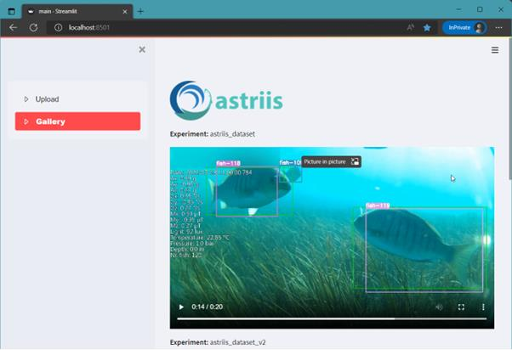Discover how ASTRIIS is employing Artificial Intelligence to optimise the management of aquaculture
With the rapid increase in world population, the sustainability of resources is a necessity to ensure a viable future. Did you know that more than half of the fish and seafood for human consumption comes from aquaculture?
According to the European Commission, 20% of the fish in Europe comes from aquaculture. The industry is key to ensuring food security for millions of people in developing countries. Sustainable aquaculture can contribute to help solving some of the most pressing issues society faces today. It can ensure food security, alleviate pressure on wild fish stocks, and reduce the climate and environmental footprint of the global food system.
Aquaculture is therefore an opportunity to meet food demand, but it also places pressure on natural resources and causes a range of environmental impacts.

With these challenges in mind, ASTRIIS, under the leadership of CEiiA, is developing an aquaculture system capable of operating autonomously, with the possibility of being adapted to multiple species of fish and operating in an offshore environment. The Offshore Aquaculture System (OAS) controls the entire aquaculture facility, and its main objective is to ensure the growth and well-being of the fish.
On top of this, ASTRIIS, under the leadership of Ocean Infinity, is designing and developing state-of-the-art technology powered by Artificial Intelligence. The Augmented Aquaculture Monitoring Systems (AAMS) helps to enhance the autonomous management and control system of aquaculture farms in the open sea.
Using the videos captured with the OAS as a baseline, Ocean Infinity applies computer vision algorithms to detect fish and track them. At the same time, we can count the number of fish and monitor their behaviour, namely when they die.
The fish detection algorithm based on neural networks allows the segmentation and tracking of fish in video frames. After detecting the fish, a bounding box is drawn around it on the video feed. In addition, simple heuristics procedures were developed to notify the user and evaluate if the fish is dead. The integration of the sensor’s data from the OAS is superimposed on the video feed providing a detailed view of the state and environment quality of the aquaculture cage.

Aquaculture can be an answer to some of the major problems of today’s society related to resources management. ASTRIIS is aligning cutting-edge technology with the 2030 UN Agenda for Sustainable Development. Its work relates to two of the 17 Sustainable Development Goals, namely SDG 12 (Responsible consumption and production), by fostering aquaculture as a sustainable way to feed society, and SDG 14 (Life below water), by promotingthe sustainable, autonomous, safe, and environmentally friendly exploitation of marine environments and their resources.
Stay tuned to the ASTRIIS website and LinkedIn for further developments on this and other ongoing project activities.

